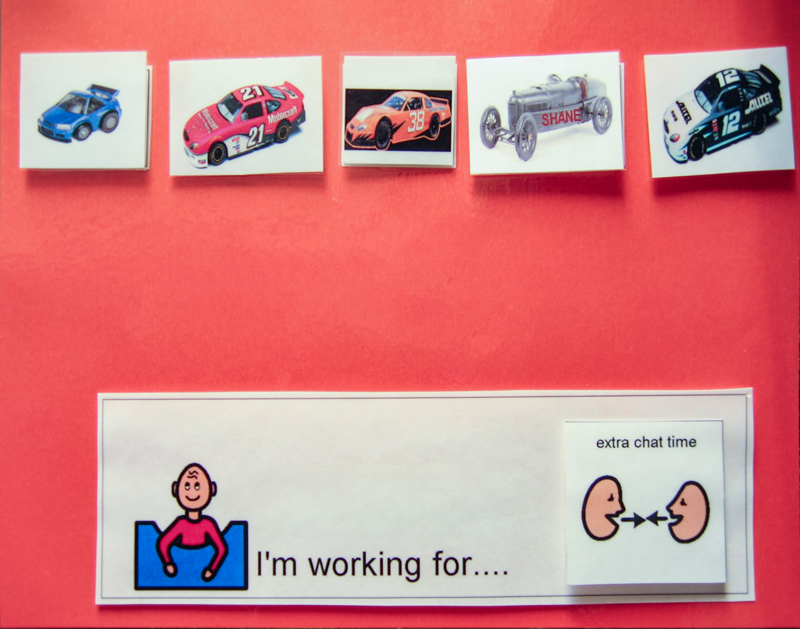Section 6: Practical Strategies across Settings
187 Reward Systems
 There are a variety of reward systems that can be used to encourage an individual’s best behavior. Although visual schedules may help improve behavior by providing structure and information, reward schedules and token boards may be used to provide more concrete expectations and salient rewards to encourage desired behaviors.
There are a variety of reward systems that can be used to encourage an individual’s best behavior. Although visual schedules may help improve behavior by providing structure and information, reward schedules and token boards may be used to provide more concrete expectations and salient rewards to encourage desired behaviors.
What is the difference between a Reward Schedule and a Token Board?
A reward schedule looks like a visual schedule, but includes a reward as the final step of the process, thus building in an incentive for cooperation.
- Set up the first part of the schedule as described in the visual schedule section.
- Allow the individual to choose what she or he is “working for” at the start of an activity by offering 3-5 options (e.g., stickers, small toys, candy, iPad time) to ensure she or he is motivated.
- Review the schedule with the individual.
- Give specific praise for completed tasks (e.g. “Nice job sitting on the chair!”).
- State when an activity is “all done” and it is time for the next one.
- Once all steps are completed, she or he receives the chosen reward.
- Add small incentives into the schedule if the individual requires more frequent feedback and/or reward.
A token board is like a reward schedule in that the individual earns rewards, but the rewards are given after set expectations are met and the contracted number of tokens earned (i.e., not necessarily the last step of a sequence). Tokens can be earned after a set number of tasks are completed, a set period of time in which the individual is engaged in a task, a number of correct responses, or other preset criteria.
- Determine specific rules or goals for the individual (e.g., sitting in seat for 1 minute = token, quiet voice/hands to self during entirety of work time = token, completing a job = token).
- Determine rewards—the best ones will be naturally reinforcing (i.e., those that the individual will naturally engage in if provided the option) and should be limited or restricted at all other times other than when earning the reward so that the motivation for the incentive is high.
- Allow the individual to choose what she or he is “working for” at the start of an activity by offering 3-5 options (e.g., stickers, small toys, candy) to ensure she or he is motivated.
- Each time the individual earns a token, allow the individual to actively engage in placing the token and provide specific verbal praise (e.g., “Nice job using a quiet voice!”).
- Once all the tokens have been earned, the individual receives the chosen reward, the board is cleared, and the process begins again.
